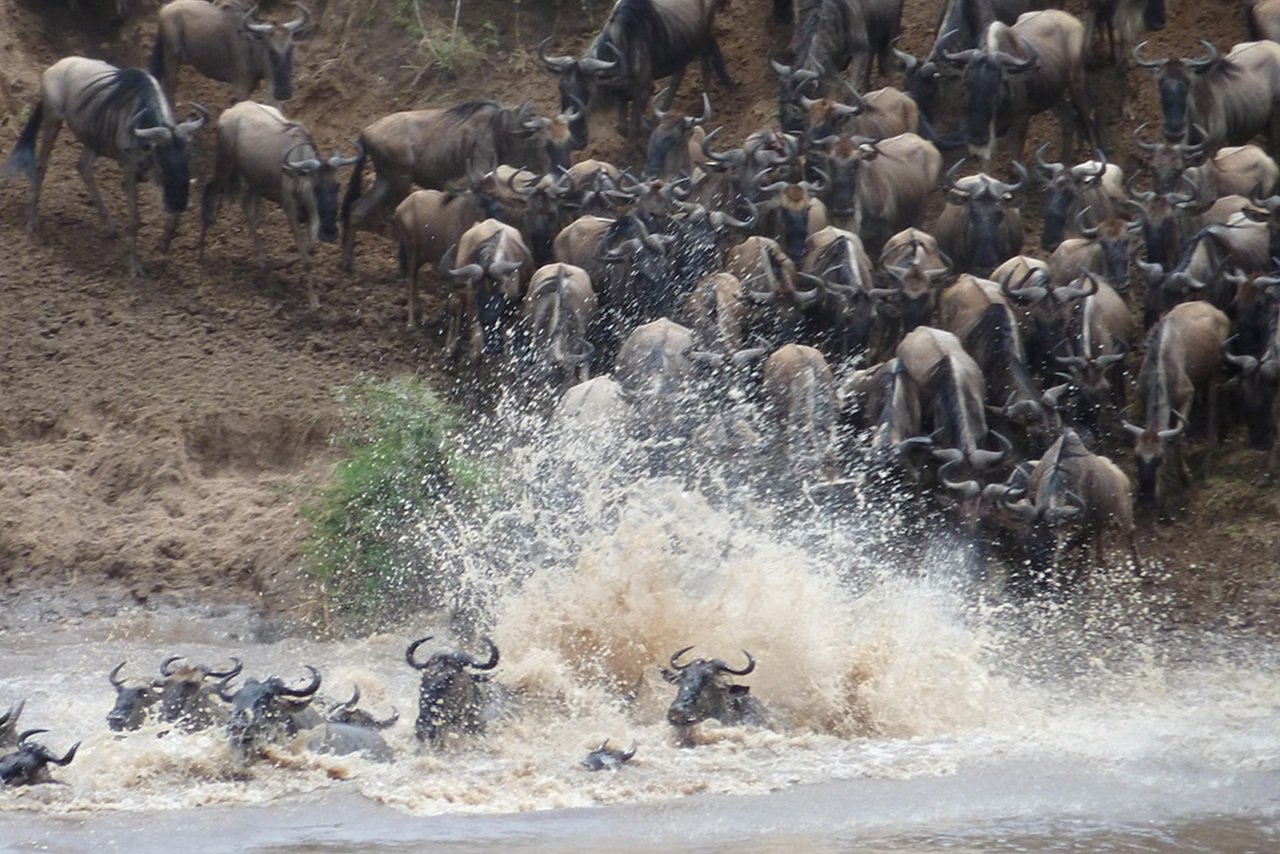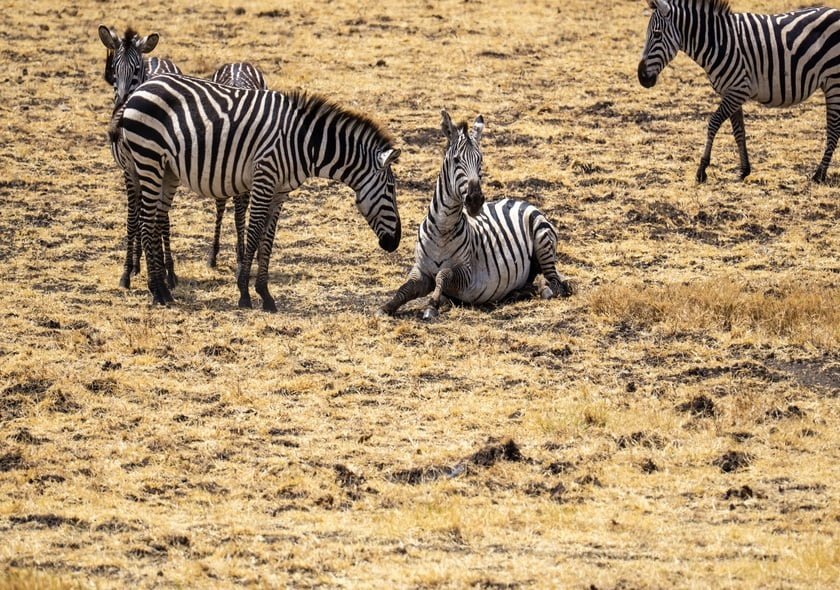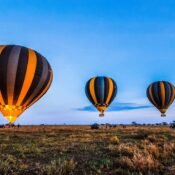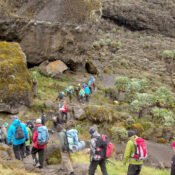
When Is the Best Time to See the Great Migration
When Is the Best Time to See the Great Migration
Introduction
Does experiencing Tanzania’s wildlife in all its glory thrill you? If yes, there’s no better time than the peak season of the Great Migration. Every year, over a million wildebeest make a daring round trip between Tanzania and Kenya, accompanied by thousands of zebras and gazelles. This breathtaking spectacle draws wildlife enthusiasts from around the world, eager to witness thrilling river crossings and heartwarming moments when hundreds of thousands of wildebeest calves take their first wobbly steps.
Do you want to see WIldebeest migration Book This 8-Day Serengeti Great Migration Safari
The Great Migration is more than a one-off event, it’s a year-round journey that unfolds differently each month. From calving in the southern Serengeti to the dramatic Mara River crossings in the north, the migration provides unique experiences for every visitor. In this guide, you’ll discover the best times and locations to witness the Great Migration, along with tips on how to experience it through guided safaris, self-drive adventures, balloon rides, and more.
Where to See the Great Migration
The Great Migration is a spectacle like no other. Millions of wildebeest, zebra, and gazelle move across the Serengeti in Tanzania and the Maasai Mara in Kenya from May to December, covering hundreds of kilometres in search of fresh pastures. Along the way, predators including lions, cheetahs, hyenas, and crocodiles add a thrilling sense of drama to the journey.
Although the migration generally follows a seasonal pattern, nature has its own timetable. Rainfall, food availability, and the animals’ instincts all influence their movements. Even outside peak periods, the Serengeti is teeming with wildlife, ensuring visitors enjoy incredible sightings year-round. Vast grasslands, dotted with acacia trees and kopjes, serve as constant backdrops to herds grazing, hunting, and migrating, giving safari-goers a continuously dynamic landscape to explore.
The Best Time to See the Great Migration: Month-by-Month Breakdown
December to March: Calving Season in the Southern Serengeti
The calving season is one of the most remarkable periods of the migration. From late December through March, wildebeests gather in the southern Serengeti around Ndutu and the Ngorongoro Conservation Area to give birth. About 8,000 calves are born daily, resulting in nearly half a million newborns in just a few months. Watching these tiny creatures take their first steps is an awe-inspiring experience that showcases the raw beauty and cycle of life in the wild.
During this period, predators are highly active, making this an ideal time for thrilling wildlife encounters. Lions, cheetahs, hyenas, and vultures focus on the newborns, offering visitors a chance to witness nature’s dramatic balance of life and survival. Lush, green pastures from seasonal rains provide abundant grazing for adult herbivores, creating picturesque scenery for photography and wildlife observation. Safari itineraries during calving season often include Ndutu and surrounding southern Serengeti plains for the best viewing opportunities.
April to May: Herds Move from Southern to Central Serengeti
By April, the herds begin their journey northwards toward central Serengeti. After calving, the wildebeests, accompanied by zebras and gazelles, move across the plains in search of fresh grazing areas. The journey is punctuated by river crossings and predator encounters, particularly along smaller rivers like Grumeti tributaries.
Travelers visiting during this transition period can witness intimate moments between mother wildebeests and calves, as well as interactions with other herbivores. The central Serengeti offers rolling plains and kopjes that provide elevated views of herds on the move. Safari packages during this period focus on game drives across migration routes and predator observation, providing a balance between calving highlights and the excitement of moving herds.
June: Grumeti River Crossing in the Western Serengeti
June marks the beginning of the western Serengeti River crossings along the Grumeti and Mbalageti Rivers. Although not as famous as the Mara River, these crossings are thrilling and dangerous, with crocodiles lurking in murky waters. Wildebeests test their courage as they navigate strong currents, while predators take advantage of vulnerable animals along the riverbanks.
The western Serengeti in June offers a less crowded safari experience, ideal for travellers seeking a more intimate and adventurous encounter with the migration. Fewer tourists mean unobstructed game viewing and greater opportunities for photography. The surrounding landscape, characterized by open plains and scattered woodlands, provides excellent vantage points for observing the crossing without interfering with wildlife movements.
July to August: Mara River Crossing in the Northern Serengeti
The highlight of the migration occurs in July and August when herds reach the Mara River in the northern Serengeti. Thousands of wildebeests gather at the water’s edge, hesitating before plunging into crocodile-infested currents. Panic, chaos, and determination unfold in front of visitors, creating one of the most iconic wildlife spectacles in the world.
This period coincides with the dry season, ensuring clear skies and ideal game-driving conditions. Luxury and mid-range safari lodges in northern Serengeti and southern Masai Mara offer prime access to river crossing points. Visitors can witness the drama unfold repeatedly, with herds crossing and recrossing in search of greener pastures. This experience captures the essence of the migration: danger, survival, and the beauty of life in the wild.
September to October: Masai Mara and Northern Serengeti
After the Mara River crossing, herds move into Kenya’s Masai Mara but continue to return to northern Serengeti for grazing. Visitors during September and October can see a mix of animals lingering in the northern plains and those starting their southward migration. The area is less crowded than during peak Mara River crossing season, allowing for more relaxed wildlife observation.
Predators remain active, and scavenger birds such as marabou storks and vultures circle overhead, adding another layer of excitement to game drives. Central Serengeti begins to call wandering herds back, completing the cycle of the migration. Safari itineraries at this time emphasize a combination of northern Serengeti and Masai Mara wildlife viewing for the most comprehensive experience.
November: Central to Southern Serengeti Migration
November sees the herds gradually returning southwards to replenish southern pastures. Rain begins to refresh the grasslands, attracting both large herds and solitary predators. Central Serengeti and Seronera Valley provide quieter, less crowded settings for wildlife observation, ideal for travellers seeking a more relaxed safari experience.
This period also brings bird migrations back to the Serengeti, making it an excellent time for birdwatching alongside traditional game drives. Lower tourist numbers translate to better accommodation rates and more personalized safari experiences. Visiting during November allows travellers to witness predator activity, river crossings in smaller tributaries, and the start of the calving season cycle in southern plains.
How to Experience the Great Migration
Guided Safari Tours
Joining a guided safari is one of the most effective ways to experience the migration. Professional guides track herds, identify predators, and offer expert insights into wildlife behaviour and conservation. Guided safaris include vehicles, park fees, accommodations, and game drives, allowing visitors to focus entirely on observation and photography without worrying about logistics.
This method is ideal for first-time visitors or anyone seeking a seamless experience. Guided safaris often range from luxury lodges to mid-range camps, making it accessible for different budgets. The combination of expertise, convenience, and insider knowledge ensures the best possible chance to witness river crossings, calving areas, and predator hotspots, creating memories that last a lifetime.
Self-Drive Adventures
For travellers who value freedom and flexibility, self-drive safaris provide an adventurous alternative. With a 4WD vehicle, visitors can navigate the Serengeti at their own pace, stopping whenever a herd or predator sighting presents itself. While self-drive offers independence, it requires preparation, navigation skills, and a strong understanding of park rules.
Self-drive safaris allow for spontaneous encounters and close-up views of wildlife in its natural environment. Visitors can combine these adventures with overnight stays in campsites or lodges across the Serengeti, Ngorongoro, or Tarangire. While more challenging than guided tours, self-drive safaris offer unmatched immersion and a sense of discovery, making it a rewarding way to witness the migration firsthand.
Hot Air Balloon Safaris
For an extraordinary perspective, hot air balloon safaris provide panoramic views of the migration. Floating above the plains at sunrise, travellers can witness massive herds, river crossings, and predator-prey interactions from a safe and tranquil vantage point. Balloon rides often include light breakfast and champagne, adding a luxurious touch to the adventure.
Balloon safaris are ideal for photographers and wildlife enthusiasts seeking a unique and immersive experience. Observing the scale of the migration from above allows a deeper appreciation of its magnitude, from the patterns of herd movement to the vastness of the Serengeti landscape. Combining balloon rides with traditional game drives creates a fully rounded safari experience.
Walking Safaris
Walking safaris offer an intimate connection with the Serengeti ecosystem. Accompanied by professional guides, travellers explore animal tracks, observe smaller wildlife, and gain insight into vegetation and ecological relationships. Walking safaris often take place in safer areas with lower predator density, making them ideal for a slower-paced, educational experience.
This approach enriches understanding of the landscape beyond large herd movements. Walking safaris allow visitors to focus on intricate details, such as insect behaviour, footprints, and plant life, complementing the dramatic sights from vehicles or balloons. It’s a perfect addition for travellers wanting a closer look at the Serengeti’s biodiversity and ecological complexity.
Combining Safari Experiences
The ultimate migration experience often combines multiple safari methods. Guided game drives provide expert-led insights, balloon safaris deliver panoramic perspectives, and walking safaris offer intimate exploration. By mixing approaches, travellers experience the migration from all angles ground, air, and close-up.
A combined itinerary ensures visitors capture both large-scale and subtle interactions within the ecosystem. It balances convenience, adventure, and education while minimizing fatigue and maximizing wildlife encounters. This holistic approach delivers an unforgettable journey through one of the world’s most iconic natural spectacles.
Frequently Asked Questions (FAQs)
When is the best time to see the Great Migration in Tanzania?
The peak period for witnessing the Mara River crossings is July to October, though the migration is observable year-round across the Serengeti. Timing depends on rainfall and food availability.
When is calving season?
Calving occurs from late January to March, mainly in southern Serengeti near Ndutu. Thousands of baby wildebeests are born daily, attracting predators and offering a unique wildlife spectacle.
What month is best for dramatic river crossings?
July and August are ideal for the Mara River crossings, while September and October show the herds’ southward return.
What is the Great Wildebeest Migration?
It is an annual journey of over 1.5 million wildebeest, accompanied by zebras and gazelles, moving across Tanzania’s Serengeti and Kenya’s Masai Mara ecosystems in search of fresh pasture.
Why do such large numbers of animals migrate?
The herds migrate to find nutrient-rich grazing and water. Seasonal rainfall drives the movement, ensuring survival and reproduction for wildebeest, zebra, and gazelle.
Are there risks associated with traveling during the migration?
Travel is generally safe with experienced guides. Risks include weather-related issues, road conditions, and proximity to wildlife. Following safari guidelines and carrying insurance ensures a safe visit.
How can travellers ensure the best migration experience?
Book guided tours with expert operators like Tanzania Beauty Safaris, We plan according to migration seasons, choose optimal accommodations, and follow guides’ advice. Combining balloon, vehicle, and walking safaris enhances the experience.
Which areas offer the best viewing?
Southern Serengeti for calving (Jan–Mar), western Serengeti for Grumeti crossings (June), northern Serengeti and Mara River (July–Aug), Masai Mara and northern plains (Sept–Oct), central and southern Serengeti for quieter encounters (Nov).
How does the migration impact the ecosystem?
The herds distribute nutrients across the plains, support predator populations, and maintain the Serengeti-Masai Mara ecosystem’s balance. It illustrates the interconnection of wildlife and habitat.
Conclusion
The Great Wildebeest Migration is a year-round phenomenon, offering unique experiences in every season. From calving season in southern Serengeti to river crossings in northern Serengeti, the spectacle captivates visitors with dramatic scenes of life, survival, and interconnected ecosystems. Planning your visit around seasonal patterns maximizes wildlife sightings and enhances the safari experience.
Witnessing the migration is more than a wildlife adventure, it’s an immersion into the rhythms of nature, the circle of life, and the vastness of African landscapes. Whether through guided tours, self-drive adventures, or hot air balloon safaris, travelers can experience this extraordinary event up close. With careful planning and timing, the Great Migration becomes a journey that leaves lasting memories and deep appreciation for the Serengeti’s wild heart.
All Categories
Recent Posts
The Best Time to Go on a Safari in Tanzania
Tanzania Travel Safety Update 2025
How Long Does It Take to Climb Mount Kilimanjaro?





